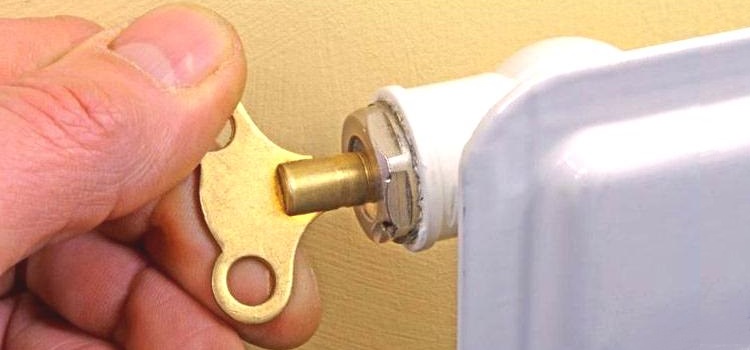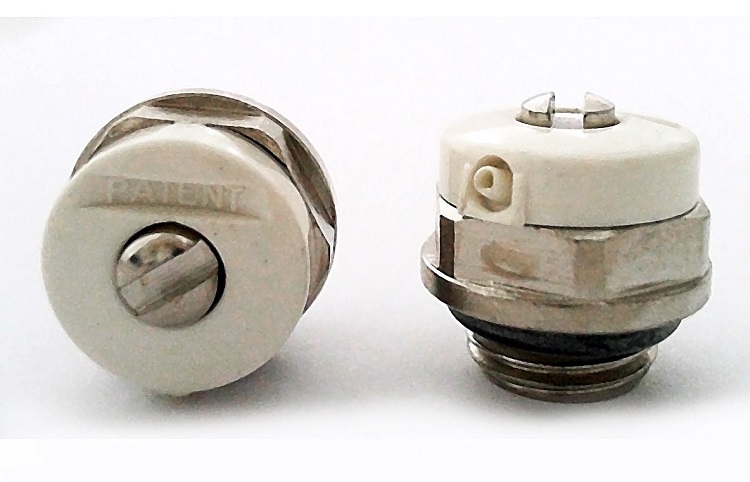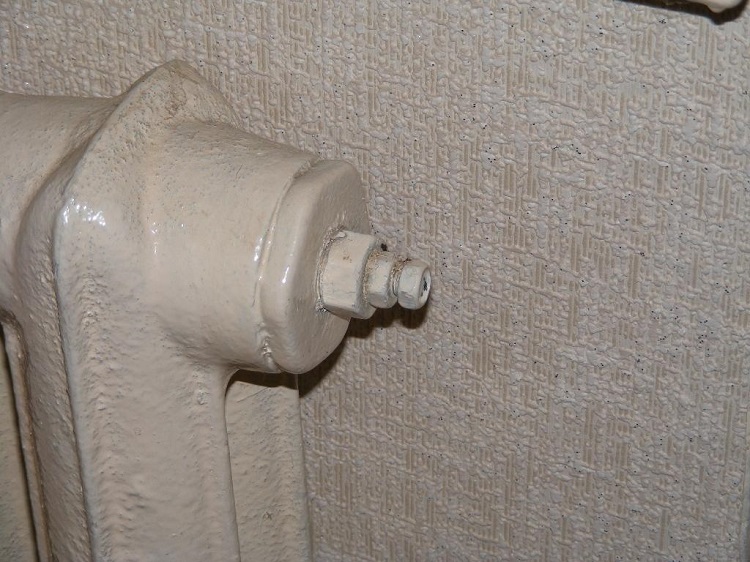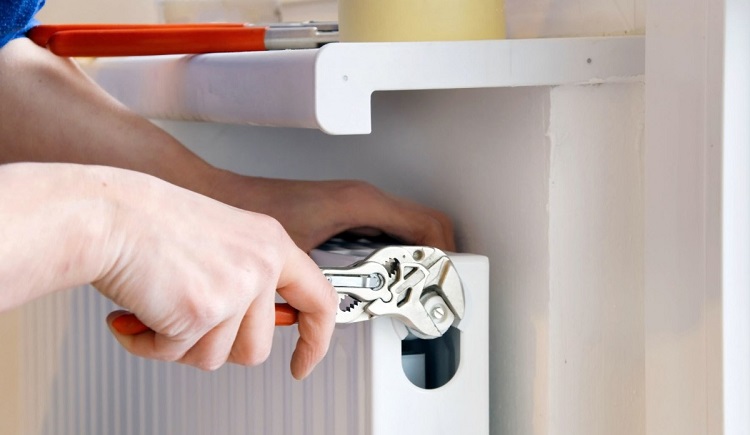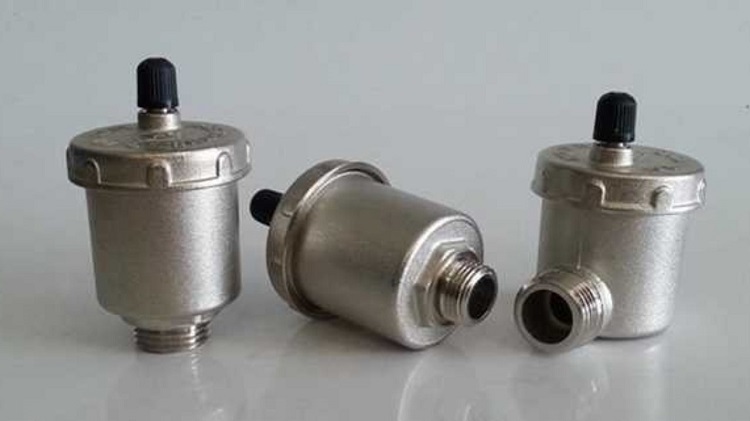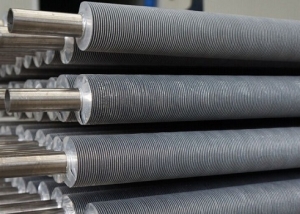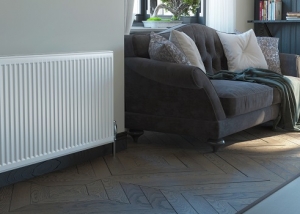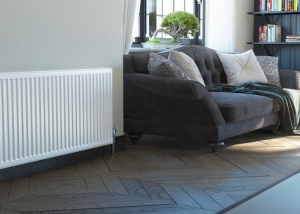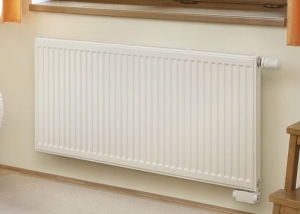In the European climate in winter it is impossible without heating the home, on which comfort directly depends. Batteries often decrease their efficiency due to clogging or airing. The simplest way to get rid of air traffic jams is a Majewski tap for cast iron radiators and other heating appliances. An ordinary crane on the top floor of the riser has been used since Soviet times, releasing gaseous accumulations. Today, a functional valve is used, with which it is easy to normalize the heating system.
Content
Appointment of the Mayevsky crane
Utility workers often hear complaints that the batteries are no longer warm. But residents rarely think about why the pipes are hot and the cast-iron radiators in the apartment are barely warm. There are actually 2 reasons:
- clogging of the junctions with organic sludge, rust and calcium deposits;
- airing of the upper sectional cavities.
Helpful information! Air or gas most often accumulates at the top, therefore, contrary to all laws of physics, you can find a warm battery below and a cold battery above. This is an obvious sign that air must be released.
Of course, eliminating this problem is a time-consuming process associated with turning off the heating directly in the cold season. In addition, dismantling or depressurization of heating equipment will be required.
The easiest way is to insert an air vent. It is placed instead of the side cap of the radiator or in another menu, for example, in the place of jointing the batteries with heating pipes. This device can be found in any catalog of plumbing equipment under different names:
- crane for air descent STD 7073V;
- air vent;
- air outlet module;
- radiator needle air valve;
- Mayevsky crane.
Models may differ slightly in design and constructive solution, but in functionality it is one and the same. This is a simple device for bleeding air from the heating system, installed at the end or top points of the circuit.
Installation conditions for air vents on radiators made of different metal
The Mayevsky air outlet valve is installed on radiators of any type - bimetallic and aluminum, cast-iron and steel. Aluminum at high temperature aluminum reacts with the chemical components of the coolant, releasing hydrogen. It is also impossible to mount aluminum and copper in a common system, these are antagonists, copper ions will gradually destroy light and ductile aluminum.
Gaseous media form air jams even in those heating devices in which the metal does not react with the coolant. Installation of an exhaust valve is a prerequisite for a closed loop of any metal, including nodal and rotary sections of the pipeline and heated towel rails.
Note! Majewski faucet for cast iron radiators of the old model is not a prerequisite, it just optimizes the operation of the entire heating system.
In the process of release from air jams, there is a large heat loss due to the discharge of the coolant, even with a small hole diameter - about 15 mm. With a small diameter, it is impossible to choose the appropriate air vent, so you can put ball valves that will not “tear” during water hammer.
Reasons for airing heating equipment
The main reason for cold batteries in the heating season is air congestion. There is always air in water; its minimum amount is present even in boiling water. Part of it enters the coolant under various circumstances:
- released during chemical reactions from organic sediment;
- enters the system at the end of the heating season when the coolant is drained;
- absorbed by pumps when a heated liquid is supplied;
- penetrates communication with gusts and leaks, replacing the lost volume of water;
- stands out from the substitution reaction during corrosion;
- A large amount of oxygen is dissolved in cold water, from where it is actively released during heating.
Gas or air accumulates in the form of an air plug at the highest or most distant point in the heating circuit. If cast-iron radiators were installed with a slope, contrary to the rules, airing will be observed every season until the Mayevsky crane is installed. Gaseous accumulations are possible in other places, if this is due to violations of the installation scheme.
Technical Parameters of Mayevsky Valve
The air outlet is designed for one function - the removal of gaseous mixtures from the heating circuit. Therefore, it does not have as many characteristics as other products. For classical cast-iron batteries, the invention of Ch.B. Majewski - manual valve tap with needle valve. It has been used since the 30s of the twentieth century.
Today, several varieties of this device are manufactured for the removal of air from heating equipment:
- classic model with external thread for mounting;
- as an additional element for equipping radiators, where there is a plastic cap;
- devices of the combined type with a ball valve, included in the set of valves.
Most types of shutoff valves work with any liquid medium, and there are blocks only for drinking water. But not all valves are adapted to work with the release of air, steam or gas under high pressure. A tightly screwed rod should seal the manifold opening. Most air vents withstand pressure of about 10 bar.
Important! For shutoff valves, the tightness class is important, according to GOST 9544-93 this is class A (product without visible leaks).
Mayevsky cranes of any modification perfectly cope with their functions complete with cast-iron radiators. Most often they are released from brass, less often - from steel. The devices are designed for the temperature regime of the medium in the range of 100 - 120 ° С, there are more stable models that work with steam under pressure when heating the coolant to 140 - 150ºС.
The type of product, its maximum load and the type of communications are reflected in the documentation attached to the model, so it is important to carefully study the instructions. For example, indicate the type of thread (external and internal) - ½ inch, one or ¾ inch. In the marking, a thread pitch of 1 mm can be indicated - this is M10x1.
The simplest version of the valve:
- brass body;
- needle duct screw;
- cap;
- sealant.
In urban heating systems that provide entire neighborhoods, automatic air vents are provided.There are other methods for the prevention of air congestion, which are engaged in engineers, specialists in the field of communications.
The fundamental difference between the automatic and manual versions of the valve
The Mayevsky automatic crane is structurally reminiscent of an air valve with a float. It is connected by a lever to a core blocking the outlet passage. The position of the float is adjustable, in the absence of air, the tap is filled with coolant, pushing the float up. When the valve is filled with air mixture, the float sags, weakening the effect on the core. In this case, the hole releases air.
This module works independently, it does not require human participation to manage it. The float model is the best prophylaxis for “airing” the heating system, which independently regulates the closing and opening of the valve. The product has a significant drawback - it is sensitive to clogging, needs occasional cleaning, which is not very convenient to produce in the heating season. The device is suitable for a closed housing in the private sector, where the coolant is cleaner.
The Mayevsky manual crane is the most common type. This simplest device is effective in various heating systems - urban and individual. The valve is capable of continuous operation without preventative cleaning, as it is the least sensitive to the quality of the medium it regulates. But it does not work without outside interference - air is vented manually by opening the locking screw.
Constructive simplicity is the guarantee of perfect operation. This is a valve with a cone-shaped screw regulating a small diameter hole. A proportional ratio of parts provides a tight shutoff of the coolant in the cast-iron radiator. The valve does not “break” during water hammer and ultimate pressure. When screwing into the screw hole, the coolant is completely blocked. When the handle is unscrewed, accumulated air comes out, but almost all the time the Mayevsky cock is closed.
A valve for bleeding a gaseous medium from heating is one of the simplest inventions that effectively counteract the airing of cast-iron radiators. Thanks to it, the efficiency of heating equipment is increased, due to which cold batteries with air jams again heat the room. The installation is no different from other valves, if you select the type of thread and the format of the valve inserted instead of the end cap of the radiator.
